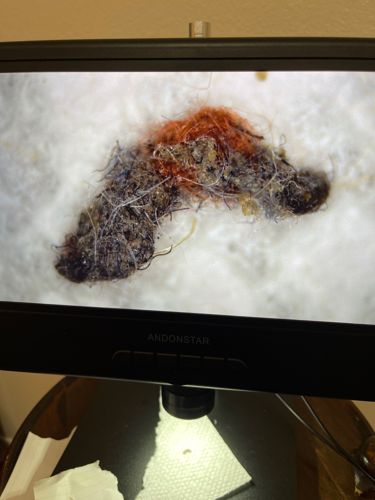Case-bearing Clothes Moth Larva
Scientific Name: Tinea pellionella
Order & Family: Lepidoptera (Moths and Butterflies), Tineidae (Fungus Moths and Clothes Moths)
Size: Larvae grow up to 10-15 mm (0.4-0.6 inches) in length, inside a silk case that can be up to 1-2 cm long.

Natural Habitat
Indoors, particularly in dark, undisturbed areas such as closets, attics, storage chests, and under furniture. They prefer humid conditions and are often found near materials of animal origin.
Diet & Feeding
Keratin-containing materials, including wool, fur, silk, feathers, dried skin, and other animal-based fibers. They also feed on lint, dust, and synthetic fibers if blended with natural ones, or if soiled with food spills.
Behavior Patterns
The larva constructs a portable silken case, incorporating bits of the material it is feeding on (which gives it a camouflaged appearance, as seen in the image). It drags this case along as it moves and feeds, only protruding its head and legs. When disturbed, it retreats fully into its case. The larval stage can last from a few months to over a year, depending on environmental conditions and food availability. The adult moth is small, brownish, and avoids light.
Risks & Benefits
Risks: Significant pest of textiles, especially those made from natural fibers like wool and silk. They can cause considerable damage to clothing, carpets, upholstery, and historical artifacts. They do not bite or transmit diseases to humans. Benefits: None recognized from a human perspective; in nature, organisms that break down organic matter play a role in nutrient cycling, but clothes moths are primarily pests in human environments.
Identified on: 10/21/2025